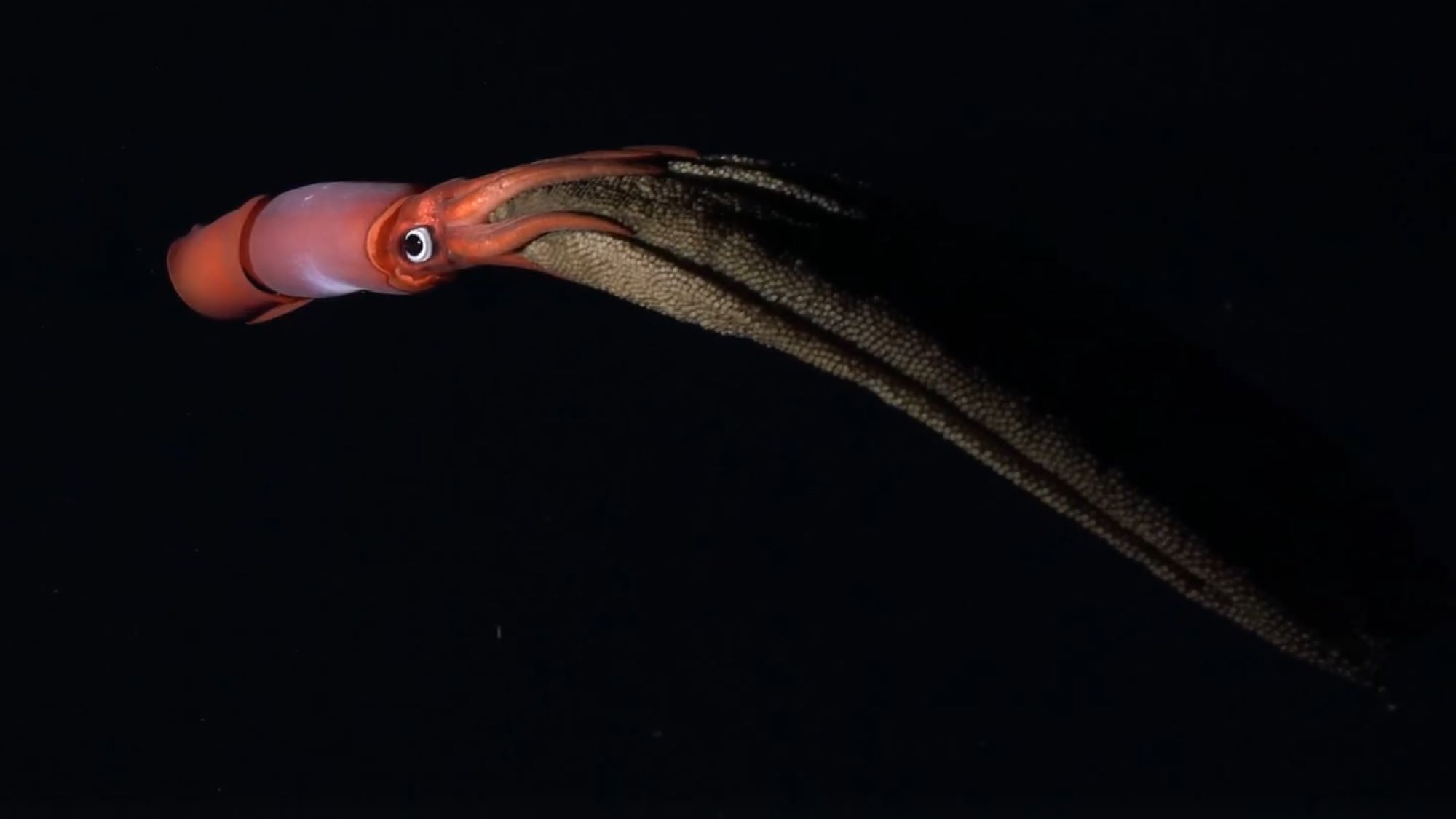5 stories making science news this week: A T. rex saga and massive solar flare
Jan. 7, 2024: Our weekly roundup of the latest science in the news, as well as a few fascinating articles to keep you entertained over the weekend.
It's the first week of 2024, and this week in science news has uncovered some glorious ancient artifacts, reignited a T. rex controversy and answered an age-old question — why is pee yellow?
1,500-year-old gold buckles discovered in Kazakhstan

Archaeologists in Kazakhstan have discovered two gold belt buckles in a 1,500-year-old tomb that feature the earliest known depictions of the great khan, or "khagan," of the Göktürks — a nomadic confederation of Turkic-speaking peoples who occupied the region for around three centuries.
The lavish gold plaques portray "the crowned sovereign, majestically sitting on a throne in a saintly pose and surrounded by servants," Zainolla Samashev, an archaeologist at Kazakhstan's Institute of Archaeology who led the excavation, told Live Science in an email. "This clearly depicts the sacred nature of power in ancient Turkic society."
Related news this week: Medieval belt buckle of 'dragon' eating frog may be from unknown pagan cult
Parasitic worms get pulled from man's abdomen

When a man in China went to the hospital for routine surgery, his doctors found something very unusual: live worms squirming inside his abdomen.
Using a small camera inserted into the abdomen of the 70-year-old — who was due to undergo surgery to remove a tumor to treat colon cancer — doctors discovered five large, brown parasitic worms in his biliary tract, the organs and tubes that produce, store and secrete bile — a yellowy-green fluid that aids fat digestion.
The doctors extracted the critters and identified them as Clonorchis sinensis, more commonly known as the Chinese or oriental liver fluke.
Sign up for the Live Science daily newsletter now
Get the world’s most fascinating discoveries delivered straight to your inbox.
Controversial study in Nanotyrannus vs. T. rex saga

In the latest episode of a long-standing debate over the identity of a set of dinosaur fossils, a controversial new study has found that the dino bones belong not to a young Tyrannosaurus rex but to a separate species: Nanotyrannus lancensis.
In the decades since the first skull was discovered in Montana in 1942, paleontologists have gone back and forth on whether the skull and later fossil discoveries belong to a distinct species or to juvenile T. rexes.
The authors of the new study claim to have snuffed out the baby T. rex hypothesis once and for all — although other experts aren't convinced.
Life's Little Mysteries: Why was the name 'Brontosaurus' brought back from the dead?
Monstrous X5 solar flare launched on New Year's Eve

Even the sun is not above launching a few New Year's Eve fireworks, it seems. In the final hours of Dec. 31, 2023, satellites near Earth detected a gargantuan X5-class solar flare erupting from our star — ending the year with the single most powerful solar explosion since 2017.
According to the National Oceanic and Atmospheric Administration (NOAA), the flare was accompanied by a gargantuan blob of high-speed solar particles known as a coronal mass ejection (CME).
Live Science long read: Solar maximum could hit us harder and sooner than we thought. How dangerous will the sun's chaotic peak be?
Finally, we know why pee is yellow

We're told to watch out for color changes in our pee, as the loss of its normal, yellowish hue could be a sign of a medical problem — but what actually makes urine yellow in the first place?
Turns out, scientists didn't know the exact answer to this question until recently. Now, researchers have discovered that pee's golden color is caused by an enzyme called bilirubin reductase, which is produced by bacteria in the gut.
Follow Live Science on social media
Want more science news? Follow our Live Science WhatsApp Channel for the latest discoveries as they happen. It's the best way to get our expert reporting on the go, but if you don't use WhatsApp we’re also on Facebook, X (formerly Twitter), Flipboard, Instagram, TikTok and LinkedIn.
Picture of the week

A deep-sea squid has been filmed gliding through inky waters with thousands of eggs suspended from its arms.
Researchers spotted the black-eyed squid (Gonatus onyx) — one of the few squids known to brood their eggs — off the coast of Costa Rica in December. Mesmerizing footage shows the squid trailing its cargo of eggs like a long gown and flapping the fins protruding from its head to move through the water.
"The large egg mass is suspended from hooks on the squid's arms, and while carrying it for several months, the cephalopod will go without feeding," representatives of the Schmidt Ocean Institute, which organized the expedition, wrote in a post on Instagram.
Sunday reading
- The Vikings reached as far west as Newfoundland, but did they also venture into Africa, the Middle East and Asia?
- Space photo of the week: An eerie look at Io, the most volcanic world in the solar system
- Why do cats throw up so much? And is it normal?
- 12 living fossils, creatures that look the same now as they did millions of years ago
- Why does the moon sometimes have a 'halo'?
- Which animal is the best hunter? (And which is the worst?)
- This little frog is something of a paradpx — here's why.
What's in store for 2024?

With 2023 stretching further into the distance, now is the time to look ahead at what the world of science has in store for us in 2024.
- Find out exactly when to see this year's full moons, including dates for supermoons and two lunar eclipses.
- From AI deciphering lost texts to a secret about our human relatives, these are some of the new breakthroughs in archaeology we may see.
- There will be plenty for stargazers to see in 2024, including a rare total solar eclipse, two bright comet flybys and three supermoons. Here are all the dates you need to know.
- 2024 is slated to be an exciting and prolific year for space missions, with trips planned to the moon, Mars, Jupiter and more — we think these are the coolest.
- Although 2023 was a game-changing year for artificial intelligence, it was only the beginning. This year, there could be a host of scary advancements that may include artificial general intelligence and even more realistic deepfakes.











